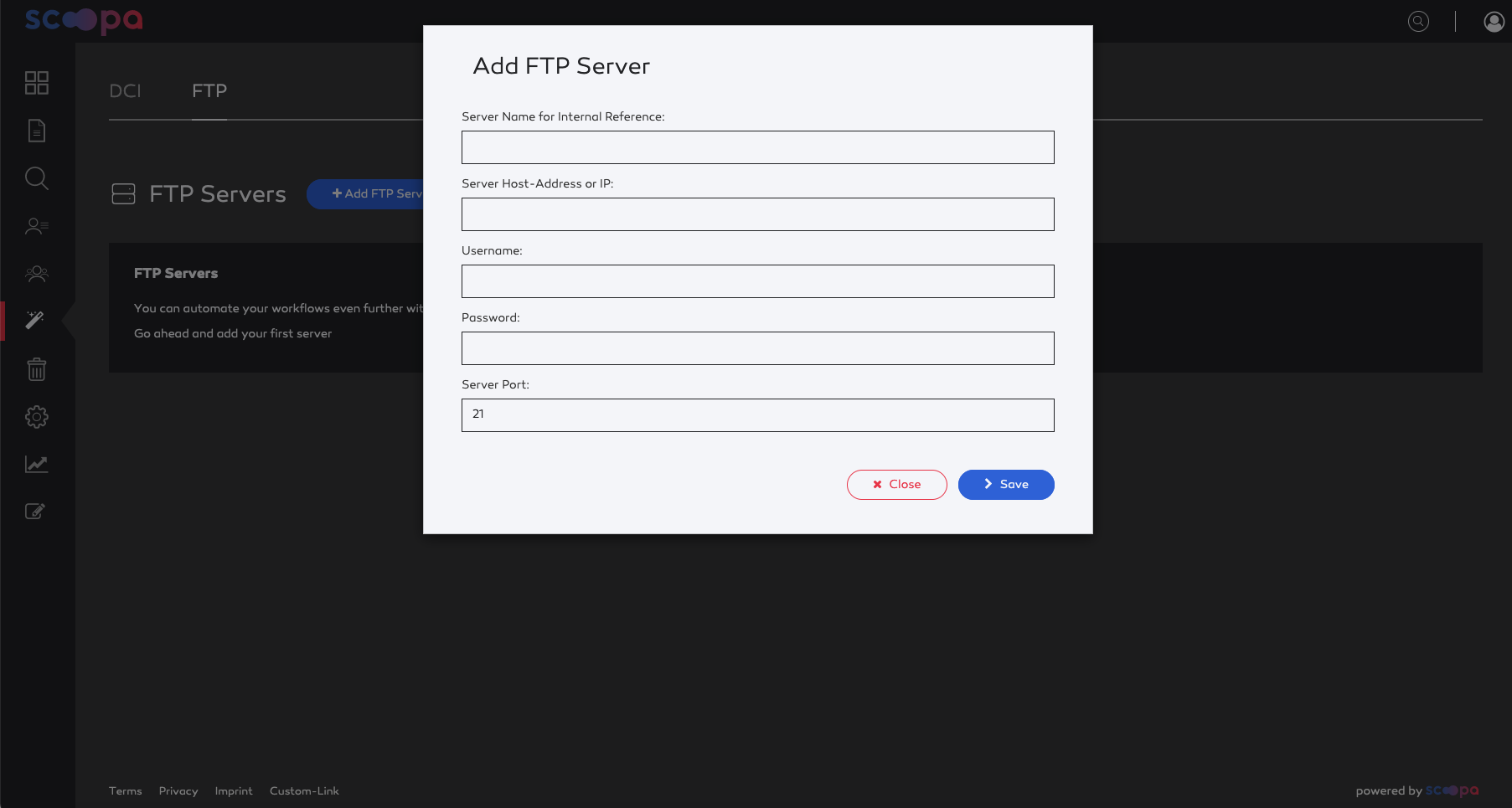Ingest via S3 (Direct-Cloud-Ingest)
Ingest to scoopa can be automated to deliver a seamless experience from the creator to the recipient. Besides our web-uploader and our smartphone-app - you can upload assets directly to an S3 Bucket. We call that DCI (Direct Cloud Ingest).
Getting Started:
You can request access to DCI anytime by getting in contact with us (contact@scoopa.com).
We create a dedicated S3-Bucket, link it to your desired platform and provide you with the necessary credentials.
Possible connectivity to S3:
You have multiple options to upload your assets to your newly created S3-Bucket:
Manual, using a file transfer application (for example: Cyberduck, Transmit)
This is recommended if you need to upload large quantities to scoopa but do not need automations.
This is more reliable and comfortable than using the web interface in your browser.
Automated, using an intermediate NAS
This is recommended for quickly setting up an automation with moderate use of funds.
You can sync folders on your NAS (for example Synology) to upload any new files to your S3 Bucket.
For Synology DSM we recommend using the built-in „Cloud-Sync“ app.
Automated, directly from your EVS-Network
By using C-Next, EVS can deliver directly to an S3 Bucket. Alternatively you can use X-File to push to a local NAS, do file renaming and prefixing and much more.
Any other solution that can connect to S3
Things to consider:
Per default, only video files will be ingested (extension: mxf, mov, avi, mpg, mpeg, mp4, h264, m4v, wmv, ts). But you can enable the option to Ingest all files.
You can prefix your files with a scoopa folder id: 12345_ddmmyy_yourfilename.mxf
You can find the folder id by browsing to your desired scoopa folder with any web browser, the id is the last part of the url following „/folder/12345“.It is also possible to ingest directly to the archive (different, cheaper price point at 0.2 €/GB) by prefixing the file with „dta__“ (2 underscores!).
So a combination of dta__folder-id_yourfilename.mxf also works.If you do not prefix the file - it’s also fine. These files will be ingested to the mailboxes of the admins in scoopa, so that the admins can move it to the right place (this is also the case if a folder id is provided but cannot be found in scoopa).
Folder structures on your S3-Bucket are NOT (yet) supported by default. Make sure to only upload files to the root of the bucket.
Files in folders will be ignored. You can enable a setting to parse files in folder-structures. Then files inside folders are ingested, but the folder-structure will be striped from the filename.
Incomplete uploads (multipart) as well as successful uploads will be purged from the bucket after 24h. So make sure to keep track of your uploads on your end (for example: the built in „Cloud Sync“ app on Synology NAS does this for you).
Files with the same size and filename will not be ingested again and ignored by scoopa if they have been previously ingested.








